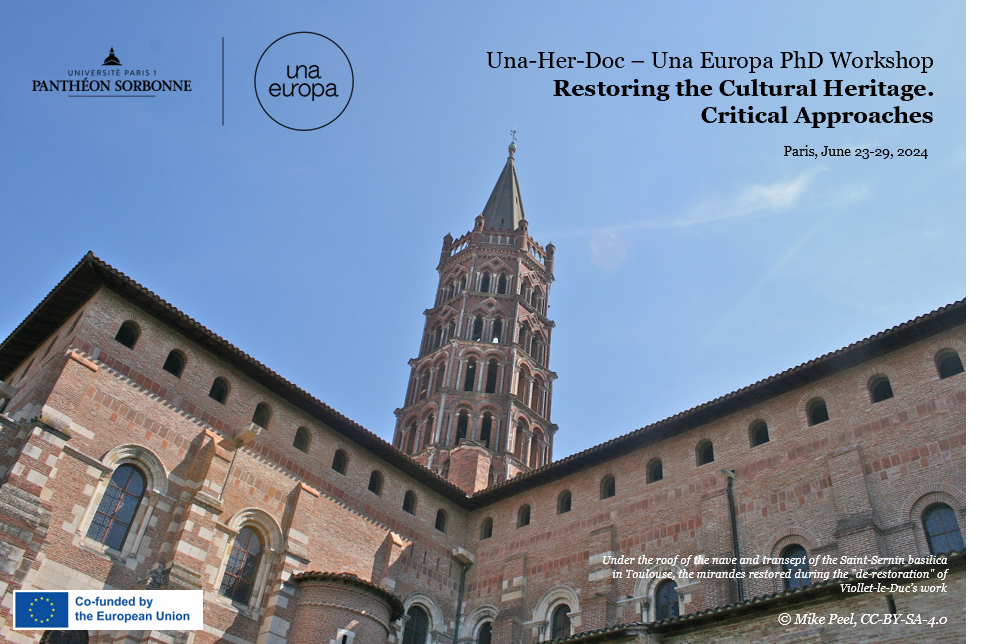
|
|
|
Theme and RationaleApproaches in conservation of cultural heritage reflect the concepts, power relations and positions of societies not only in relation to their past, but also their present and future. They are dynamic and evolve over time and space, each time reflecting the way in which societies conceive the contours of cultural heritage and its role in society. As early as the 1930s, the Athens Charter for the Restoration of Historic Monuments (1931) sought to provide a framework for heritage restoration practices, codifying the approaches that were acceptable and banning those that, in the name of restoration, harmed the heritage. The International Charter for the Conservation and Restoration of Historic Monuments (known as the Venice Charter, 1964) clarified these issues by defining how architects in Europe and around the world should practice heritage conservation and restoration. These charters and the experts who work for UNESCO’s advisory bodies, such as ICOMOS and ECCO, have gradually created a common framework for major international restoration projects. Yet, this arsenal of charters and documents is far from creating an unambiguous framework for approaches to conservation and restoration. Just as in the 19th century, today “doing restoration is doing architecture”, to quote Viollet-le-Duc. Restoration and conservation projects around the world demonstrate a wide variety of approaches, even within the context of the same monumental complex: The restoration of the vast Angkor complex (Cambodia), for example, which currently involves work by more than 23 countries on 4 continents, is a striking example of a wide range of practices and approaches. The restoration projects carried out by France, China and India ultimately reflect the different approaches of each country and its restorers. To put it schematically, between the cult of ruin on the one hand and systematic anastylosis on the other, European romanticism clashes with the desire to ensure the integrity of monuments as a sign of respect for the monument and its religious role. The Ta Prohm Temple before and after restoration. Picture of the panel in front of the building. © M. Gravari-Barbas, 2015 Beyond this, different approaches to restoration may also reflect policies, whether asserted or not, to assert certain powers, whether local, national or international, in colonial or postcolonial contexts. On the one hand, economic realities sometimes dictate that conservation must be carried out quickly, cutting short the requirements imposed by the Charters. Elsewhere, the imperatives of tourism and the need to welcome and mediate with the public tend to encourage projects that favour the restitution of elements that have disappeared, not always based on a reasoned restoration approach. On the other hand, conservation and restoration of natural spaces, alone or in association with historical buildings, are more and more taken into consideration. The restoration program of the Fontainebleau forest (France) these last ten years is one demonstration. But the recent nature of these issues should not blind us to the action taken since the end of the 19th century to restore mountain landscapes. In France, the Landscape Act preceded the Historic Monuments Act, when in Europe both areas have moved forward together under a common methodology and actors. Viollet le Duc himself tried to conceive the restoration of Mont Blanc. The workshop welcomes conceptual proposals or case studies. It adopts an inclusive approach to heritage (buildings, sites, objects, parks and gardens, landscapes, etc.). It focuses as much on restoration approaches as on how they are received by experts, local society and visitors. It seeks to analyse the controversies and conflicts that lie behind conservation projects. Every restoration project takes place, and must be assessed, in a political, social and economic context from which it cannot be separated. It is these different approaches that this workshop wishes to explore, in all their historical and geographical diversity. It invites papers addressing the question of conservation and restoration as an act with political, geopolitical, economic, social, legal, cultural or tourist repercussions. In addition, the scientific contribution of restoration can also be questioned. The restoration process produces information about practices of creation and previous restorations. That allows us to evaluate states of knowledge at a given time. The restorations of Notre Dame de Paris, from the years 1980-1990 and 2020 have allowed to refine the knowledge of the construction phase. In this sense, it invites contributions from all disciplines, with the aim of encouraging a cross-fertilisation of views on conservation and restoration and its many implications for monuments and societies. Case studies with comparisons between conservation and restoration practices between distinct geographical areas are welcome. We think here of the choice in terms of conservation of art objects between the West and Asia that express a different relationship to the values of seniority and commemoration in particular. This difference now leads some Western museums to modify their choices of conservation of their oriental collections.
Topics that could be addressed:
|

